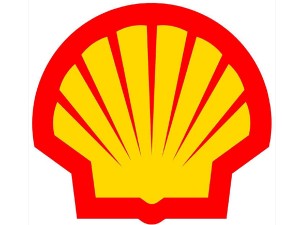Shell group bullish on Philippines, scouts for projects

SHELL BULLISH Royal Dutch Shell, through its upstream unit Shell Philippines Exploration BV, is poised to invest another $1 billion to increase the production of the Malampaya deepwater gas-to-power project off Palawan. Shell Philippines vice president for communication Roberto S. Kanapi said there are opportunities for investment and expansion, unlike in the past when the Philippines was placed on low priority.
Royal Dutch Shell Plc has placed the Philippines in its investment map as it sees growth opportunities in the country despite the legal tussles and difficulties affecting its local downstream and upstream units.
At the Shell Media Dialogue on Monday, Shell vice president for communication Roberto S. Kanapi told reporters that there were opportunities for investment and expansion here in the Philippines, unlike in the past when the Philippines was placed on low priority.
“There are exciting things. But there are no details yet. There are plans for Shell in the Philippines. [Our parent firm] saw that the Philippines is an attractive market and a growing market at that. And I think the change in governance also helped a lot,” Kanapi explained.
“As for the cases we are facing, we will go to courts with that and that is part of doing business in the Philippines, but we are prepared for that. We are looking more into the opportunities than the threats,” he added.
For one, Shell Companies in the Philippines is now in the process of completing a study that will determine the next steps for its refinery in Tabangao, Batangas—as to whether it will be expanded or upgraded to cater to the increasing local demand.
Kanapi said that they expected to complete the study next year. The decision to list Shell on the local bourse would also largely hinge on the results of the study, he added.
Royal Dutch Shell, through its upstream unit Shell Philippines Exploration BV, is likewise poised to invest another $1 billion to increase the production and extend the life of the Malampaya deepwater gas-to-power project off Palawan.
SPEX, along with other consortium members Chevron and PNOC Exploration Corp., plans to invest about $250 million for the second phase of the Malampaya project, which will entail the drilling and development of two additional wells. This is expected to be completed by February 2014. Another $750 million will be invested for the third phase, which will involve the installation of a new platform where additional equipment and facilities will be housed by December 2015.
“The projects, entailing new investments, are seen to further benefit the Philippines in energy self-sufficiency and government revenues and will continue to be a major source of power for Luzon’s energy requirements in the years to come,” SPEX said.
Meanwhile, Royal Dutch Plc has also expressed interest in participating in the liquefied natural gas program of the government.
Edgar Chua, country chairman for Shell Companies in the Philippines, had said that the company was interested in becoming a supplier of LNG as well as in putting up the necessary infrastructure, including the “regasification” facility and pipelines—which would require millions of dollars of fresh investments.
He did not indicate if Shell would be interested in bidding for the proposed 100-kilometer Batangas-Manila natural gas pipeline that will require as much as $1.3 billion in investment—of which $500 million will go to the construction of the pipeline alone while another $700 million to $800 million will be needed for the “regasification” facility and the receiving terminal.
Chua only noted that Shell would likely look for other potential local partners for its planned foray into the Philippine LNG industry.
Should Shell proceed with its plans, it may be able to source LNG from Australia as the board of Royal Dutch Shell Plc announced earlier that it would pursue its Floating Liquefied Natural Gas (FLNG) Project in that country.—Amy R. Remo